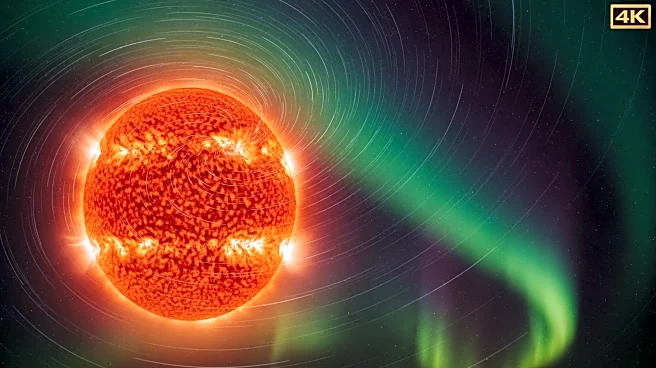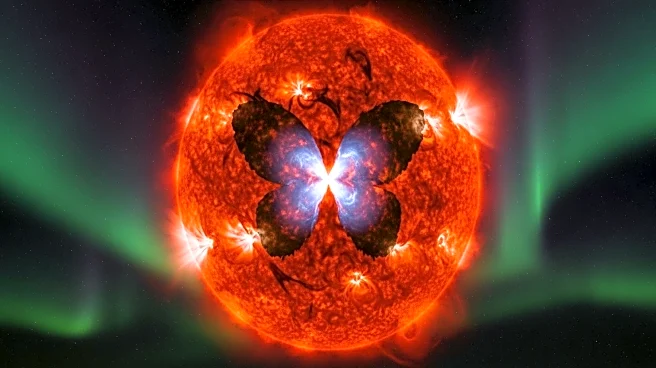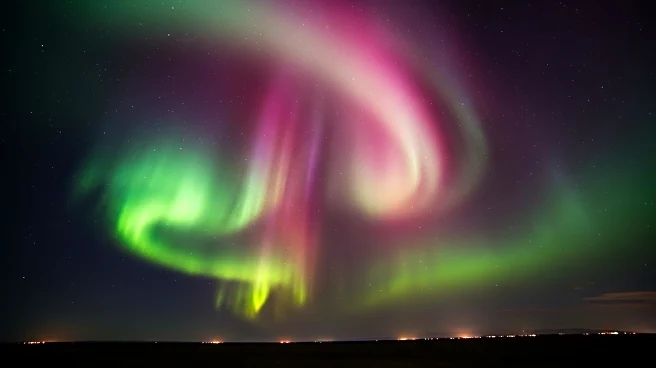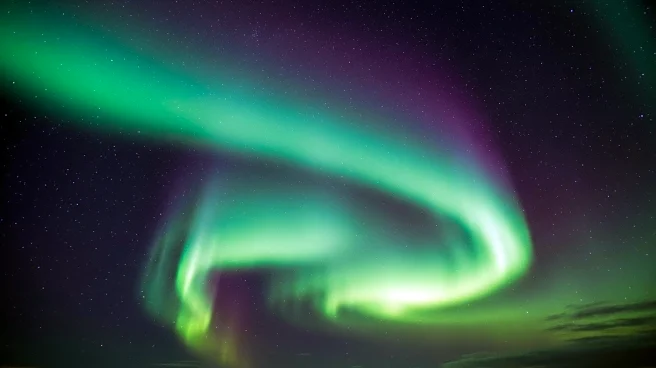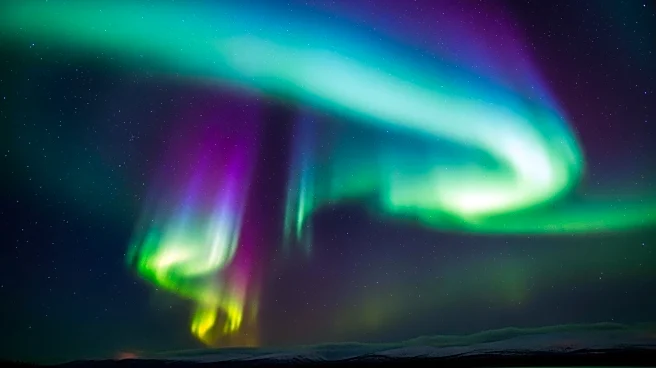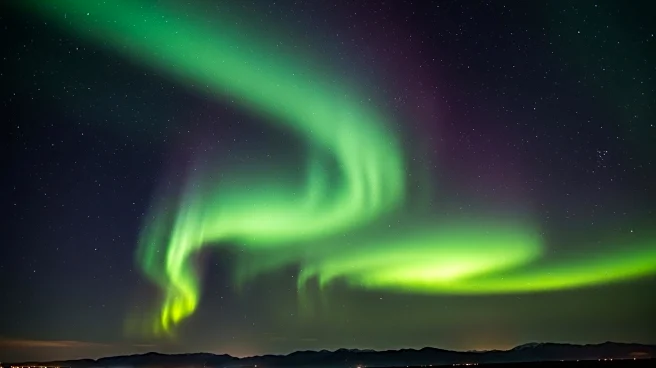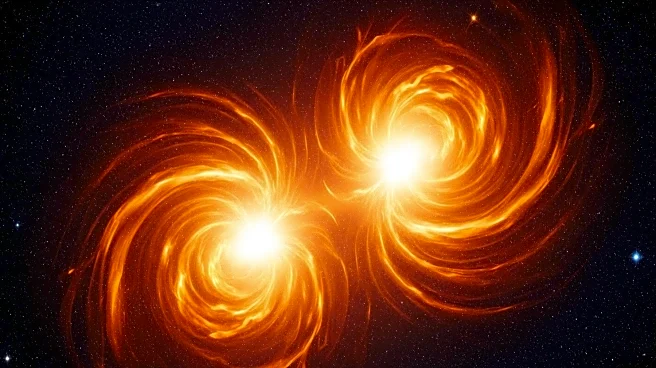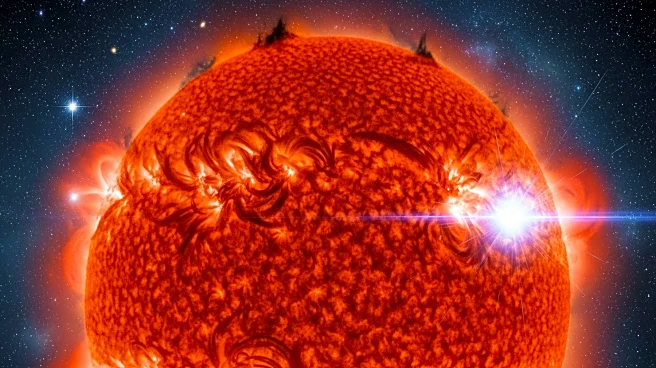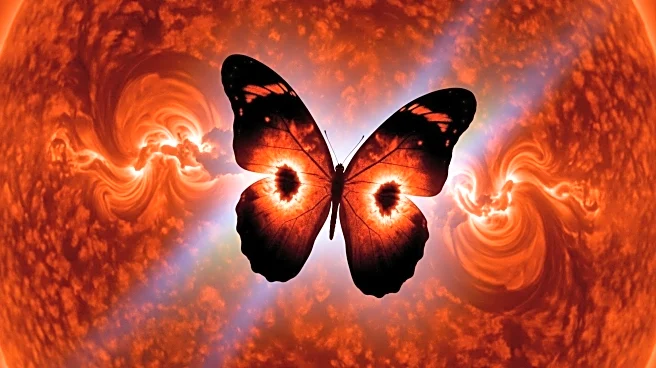What's Happening?
A butterfly-shaped coronal hole in the Sun's atmosphere is sending high-speed solar wind towards Earth, potentially causing geomagnetic storms. These storms, predicted to occur between September 13 and 14, 2025, could lead to auroras visible in northern latitudes. The solar wind, composed of charged particles, interacts with Earth's magnetic field, creating auroras. The UK Met Office forecasts a G2 (moderate) storm, which could disrupt satellite communications and power grids. The timing coincides with the autumn equinox, enhancing the likelihood of auroras due to the Russell-McPherron Effect.
Why It's Important?
Geomagnetic storms can impact technology and infrastructure, including satellite operations and power systems. The potential for auroras offers a visual spectacle for skywatchers, particularly in regions like Canada, Alaska, and Scandinavia. The event underscores the importance of monitoring space weather, as solar activity can have significant effects on Earth. Understanding these interactions helps improve predictions and mitigate potential disruptions, highlighting the need for continued research in space weather forecasting.
What's Next?
As the solar wind reaches Earth, the intensity of the geomagnetic storms will depend on the alignment of the solar wind's magnetic field with Earth's. Forecasters will continue to monitor the situation, providing updates on the storm's progression and potential impacts. Skywatchers are encouraged to keep an eye on the skies for possible aurora displays, while industries reliant on satellite communications and power grids remain vigilant for any disruptions.
